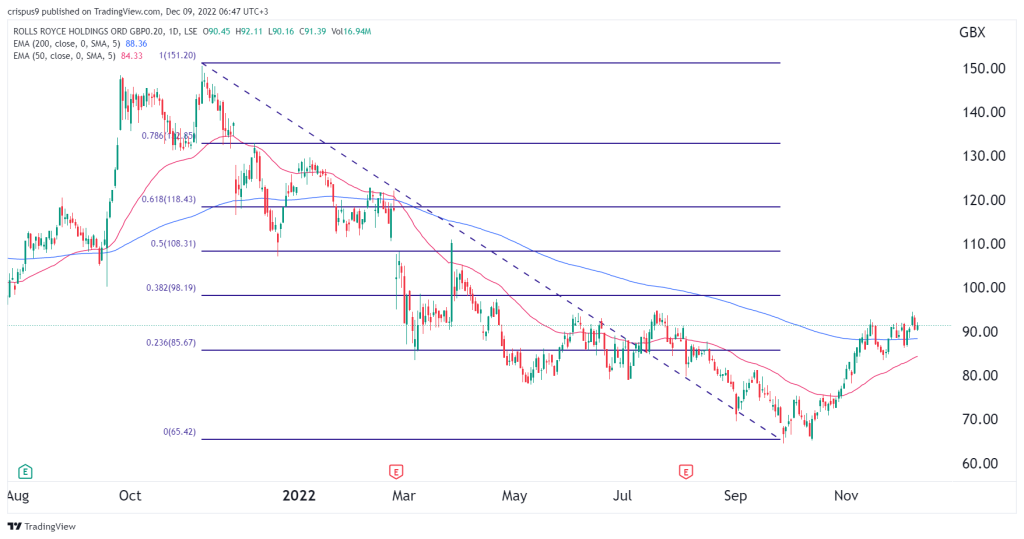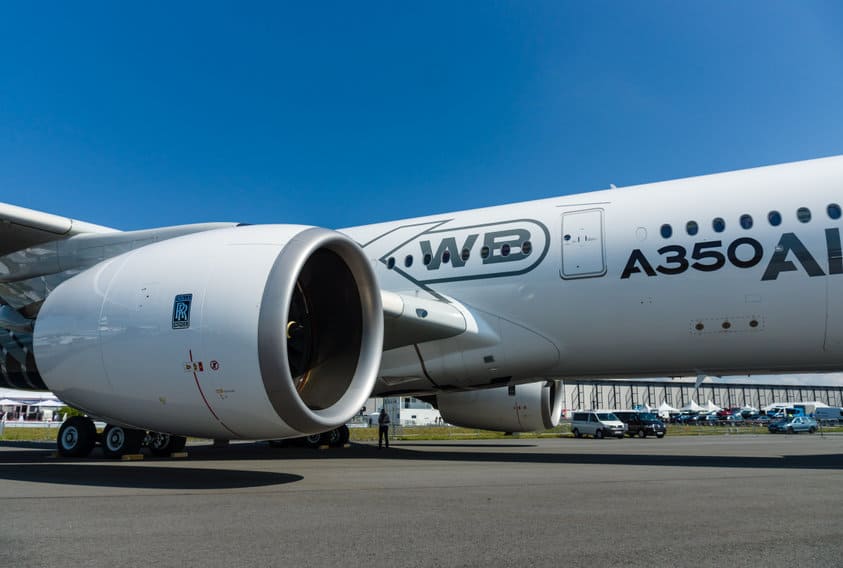- Summary:
- Rolls-Royce's share price recovery faded this week as concerns about a global recession rose. The stock hovered about 91.47p
Rolls-Royce’s share price recovery faded this week as concerns about a global recession rose. The stock hovered about 91.47p, where it has been in the past few days. This price is about 41% above the lowest level this year, giving the manufacturing giant a market cap of over $9 billion.
Serial underperformer
Despite the recent recovery, Rolls-Royce has been a serial underperformer against its peers. In the past five years, the shares have dropped by more than 70% while the Vanguard Industrials ETF (VIS) has soared by about 50%. It has also underperformed the FTSE 100, which has been flat in this period.
This underperformance is mostly because of the challenges the company has faced, including the problems with its Trent engines that cost the company over $2.8 billion to repair. It also struggled as the aviation industry faced its toughest challenge during the Covid-19 pandemic. This is important since Rolls-Royce Holdings makes most of its money in long-term service contracts that are dependent on aircrafts flying.
Now, the management is implementing changes to accelerate growth. It sold its ITP Aero business during the pandemic and launched a plan to build small nuclear reactors in the UK. Most importantly, the firm implemented a series of cost-cutting measures, including laying off of thousands of workers. In its report, Fitch noted that:
“Rolls-Royce managed to significantly decrease costs and increase efficiencies, outperforming our previous free cash flow (FCF) expectations in both 2021 and 1H22.”
Rolls-Royce is undervalued
All these challenges have left a company that is significantly undervalued. Its forward EV-to-sales ratio of 1.11 is significantly small compared to other industrial companies that have an average of 2. Similarly, the firm has an EV-to-EBITDA ratio of 9.91, which is also much lower than the industry average of about 15. Its price-to-cash flow ratio of 7.48 is also significantly low.
A closer look at its Discounted Cash Flow (DCF) calculation shows that the company is undervalued by about 38%. DCF is a complex calculation that looks at the net present value (NPV) of future cashflows.
Another catalyst for the Rolls-Royce share price is the ongoing China reopening. With the government ending its Covid-19 policies, there is a likelihood that the civil aviation business will recover at a faster pace in 2023.
Further, Rolls-Royce has adequate liquidity, with over 2.8 billion pounds in cash and 7.8 billion in total liquidity. This means that the company will not raise cash any time soon to fund growth.
Rolls-Royce share price outlook
Rolls-Royce stock has managed to move above the 50-day and 200-day moving averages and a golden cross appears to be about to form. It has also consolidated slightly below the 38.2% Fibonacci Retracement level. Therefore, with the recent US army contract wins, I suspect that the stock will continue its recovery to above 100p by the end of the year.



